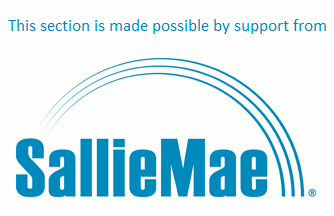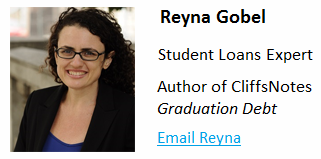How to Practice Making Student Loan Payments

Remember how scared you felt when you first got behind the wheel to drive a car? You were probably oozing with anxiety — it's a good thing you had a learner's permit and had to practice under the guidance of an experienced teacher before you could really drive on your own.
In some ways, repaying student loans isn’t much different — it might be intimidating, but after a little practice and guidance, it'll feel natural. That's why I'm going to teach you how to make practice student loan payments. When you're still in your grace period, these fake “payments” to your savings account will help make paying off your loan second habit — and help you build some savings. Here's what to do.
Find Out the Date Your First Payment Is Due
Call your loan servicer or servicers and find out when your first payment is due. You can find contact information for your servicer(s) on the National Student Loan Data System. While you’ve got your servicer on the phone, ask if you can get estimated payment amounts for different payment plans, including income-based repayment, standard 10-year repayment, and extended repayment.
Not all loan servicers will be able to give you the exact amount of your first payment months ahead of schedule, but that shouldn't stop you from making practice payments. If you can’t get estimates directly from your servicers, go to our resources section to find links to repayment calculators that will help you estimate your payment amounts on your own. Try several different variables. For example, if considering utilizing the Pay as You Earn option, enter your current income, and then recalculate the amount if you land a great new job.
After you’ve gotten estimates for different payment plans, pick one that you feel like is manageable with your budget.
Review Your Budget
Creating a budget is the first step to managing your finances when you're in repayment. If you currently track your expenses, great! You should have a good idea of how much you can afford for payments. If not, do you know much money you have left at the end of the month after you pay your bills? Do you have enough to pay any of the student loan payments your servicer calculated for you? If not, don't worry — we'll make room for your payment in the next step.
Make Room for Your Payment
If you're feeling cash-strapped, the good news is there's a lot you can do to change that. For instance, when I first moved to Manhattan, I’d take long walks. Inevitably, with what seems like 50 restaurants per half block, I bought a lot of snacks along the way. After all, who doesn’t want to buy pudding from a place so good that they survive by only making pudding? During my snack-filled walks, I managed to not lose an ounce from my body but hundreds from my bank account. So, I decided I needed to make a change — I moved to Brooklyn where there were less restaurants per block, and I lost 40 pounds while keeping my bank account intact.
So ask yourself some similar questions. Could you eat out less? Are you buying too many groceries, and some of them are spoiling before you're able to eat them? Can you turn the lights off when you’re not home? Find ways to cut your budget at least enough to afford the smallest payment calculated by your student loan servicer.
If what's spoiling your budget isn't obvious, use free financial tools such manilla.com to compare what you think you’re spending in different categories with what you are spending.
Transfer Your Practice Student Loan Payment to a Savings Account
Once you’ve established which payment you can afford, start transferring this amount into a savings account on a monthly basis until your first payment is due. This is also a great way to start building a stash of emergency cash. If you have five months until you really have to start paying and are able to put away $200 per month, you’ll accumulate $1,000 bucks.
If you don’t have a savings account, find out if your bank is offering a special for opening one. You might get an extra $25 to $50 courtesy of your bank. I got $50 from mine.
If you have more than one month before your payments have to start, you can also go back to step one, pick a different payment plan, and then practice that one the next month. So if during the first month of practice you realize you can afford $100 easily, try setting aside $200 the second month.
Adjust Payment Plans as Needed
You may decide to change your repayment plan in the future or simply add to your current payments to pay off your loan faster. Since federal student loans allow changes to repayment plans once per year, you should practice the new payment for at least two months before officially changing your plan. After all, you don’t want to ask for a change and then find out you can’t afford the payment. To practice when you're actually in repayment, transfer the difference between your current payment and the one into your savings account until you’re ready to make the change.
And if you experience a financial setback and need to change your plan, don't worry — even the most experienced drivers get lost every now and then, but they always get back on track.
This article is part of our New Graduate Help Center — a new Wise Bread section offering financial tips and life hacks to recent grads. This section is made possible by the support of Sallie Mae. Check out more great tips from this section:

 Why You Shouldn't Panic About Your Federal Student Loans
Why You Shouldn't Panic About Your Federal Student Loans 3 Things You Must Know About Repaying Your Private Student Loans
3 Things You Must Know About Repaying Your Private Student Loans What Recent Grads Must Know to Repay Federal Student Loans
What Recent Grads Must Know to Repay Federal Student Loans 15 Ways to Pay Back Student Loans Faster
15 Ways to Pay Back Student Loans Faster







